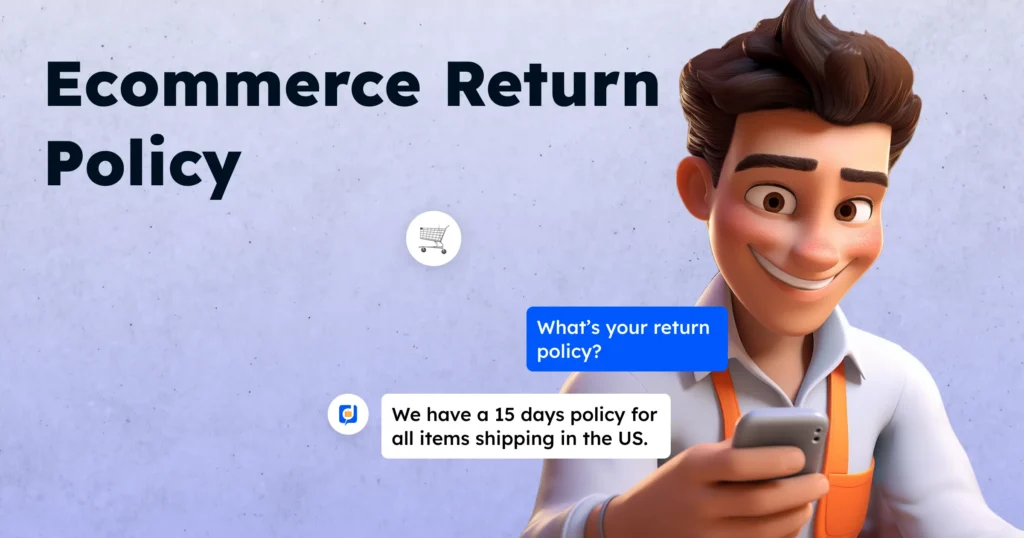Did you know that 92% of consumers will buy again if the return process is easy? In the competitive world of eCommerce, a well-crafted return policy can be a game-changer.
It’s not just about handling returns; it’s about building trust, ensuring customer satisfaction, and ultimately driving repeat business.
This article will explore the key components of a strong return policy, showcase examples from successful brands, and provide customizable templates for 2024.
What is an eCommerce Return Policy and Why It Matters?
An ecommerce return policy is an essential part of your online store that outlines how customers can return or exchange products.
It matters because meeting customer expectations can lead to higher satisfaction, trust, and loyalty.
When you have a clear and fair return policy, you set the stage for repeat purchases and a positive shopping experience.
30% of all products ordered online are returned, compared to only 8.89% of products purchased from brick-and-mortar stores. (source)
The Importance of Meeting Customer Expectations in Your Ecommerce Business
In the world of ecommerce, a well-crafted return policy acts as a safety net for customers, providing them with the reassurance they need when making online purchases.
Meeting customer expectations through effective return management improves customer satisfaction.
Clear guidelines on the return process help ecommerce brands build trust, prevent dissatisfaction, and encourage repeat business, ensuring customers feel valued and confident in their buying decisions.

Why Your Business Needs a Customer-Centric Return Policy?
A customer-centric return policy is vital for enhancing customer satisfaction and loyalty. When your return process is clear and easy, customers feel more confident about their purchases, which can lead to higher conversion rates.
Providing excellent customer service and a positive customer experience are key aspects of customer retention, as they encourage shoppers to return to your store and recommend it to others customer retention strategies.

62% of consumers expect online stores to accept returns within 30 days of purchase. ( Source )
Benefits of a Well-Defined Return Policy for Customer Loyalty
A well-defined return policy can make a big difference for your ecommerce business.
It not only encourages customers to shop with confidence but also helps you manage costs effectively.
Here are some key benefits to contemplate:
- Encouraging customers to shop with confidence.
- Reducing return fraud and managing shipping costs.
- Enhancing customer loyalty.
- Reducing cart abandonment.
Encouraging Customers to Shop with Confidence
Creating a customer-centric return policy not only improves your ecommerce business’s appeal but also helps instill confidence in your shoppers.
Here are four key benefits to reflect on:
- Clear guidelines reduce confusion.
- Easy returns elevate customer loyalty.
- Good customer service increases trust.
- A fair policy minimizes return fraud.
Reducing Return Fraud and Managing Shipping Costs
Building on the importance of a customer-centric return policy, managing return fraud and shipping costs can considerably impact your ecommerce business’s bottom line.
Consider these strategies:
- Clearly define your return policy.
- Communicate shipping costs upfront.
- Use a return management system.
- Analyze return trends with data.
These steps help in reducing return fraud and improve customer satisfaction, making it easier for customers to return items.
Enhancing Customer Loyalty and Reducing Cart Abandonment
With a customer-centric return policy in place, you can greatly elevate loyalty and reduce cart abandonment in your ecommerce business.
Consider these key benefits:
- Customers receive a clear understanding of return processes.
- Encouraging customers with easy returns increases repeat purchases.
- Clear return policies improve customer trust.
- Effective inventory management reduces returned items.
These factors contribute to a better general shopping experience.

Over 84% of online buyers would stop shopping with a retailer after a bad returns experience. ( Source )
How to Write an Effective eCommerce Return Policy?
Creating an effective ecommerce return policy starts with understanding what key elements to include.
You’ll want to clearly define the eligibility of items for return, outline the time frame for returns, and provide a straightforward process for customers to follow.
Key Elements to Manage Customer Expectations
Creating an effective return policy is crucial for managing customer expectations and ensuring a smooth shopping experience.
To get started, focus on these key elements:
- Identify eligible items for return and timeframes.
- Clearly define the return process and returned item conditions.
- Outline how customers receive refunds or exchanges.
- Address return management and inventory management challenges.
These points will help you build a transparent policy that customers can easily understand.
Identify Eligible Items for Return and Timeframes
A well-defined return policy is essential for managing customer expectations, especially regarding eligible items and timeframes.
Clearly outline:
- Unused, unopened products are eligible.
- Personalized and perishable goods can’t be returned.
- Return timeframe should be 15 to 90 days.
- Process returns within 7-14 days after receipt.
Make this information visible on your product pages, just like in brick and mortar stores.
Clearly Define the Return Process and Returned Item Conditions
When outlining your return process and the conditions for returned items, clarity is key to minimizing misunderstandings.
Follow these steps to guarantee customers know what to expect:
- Specify the time frame for returns (15-90 days).
- State item conditions (unused, undamaged).
- Provide detailed return instructions.
- Mention any exceptions (personalized or perishable items).
This clear approach fosters trust and satisfaction.
Outline How Customers Receive Refunds or Exchanges
Understanding how refunds or exchanges work is just as essential as knowing the return process itself.
Here’s how you can expect to receive your refunds or exchanges:
- Check item condition: Verify it’s unused or in original packaging.
- Initiate return: Follow the steps for obtaining an RMA number.
- Processing time: Refunds take 5 to 14 business days.
- Reimbursement method: Anticipate funds back to your original payment method or store credit.
Address Return Management and Inventory Management Challenges
Steering return management and inventory challenges can be tricky for ecommerce businesses, but a well-crafted return policy can make all the difference.
Here are four key elements to include:
- Define a clear return timeframe, typically 15-90 days.
- Specify conditions for eligible items.
- Outline the return initiation process.
- Clarify who pays for return shipping.
These steps help manage expectations and improve customer satisfaction.

92% of consumers say that they will buy again if the product return process is easy. ( Source )
eCommerce Return Policy Templates for Different Models
When you’re setting up your ecommerce store, having the right return policy template is crucial for your success. A well-defined return policy not only improves customer trust but also contributes to a smoother shopping experience, aligning with the importance of setting up main pages of the site.
Different business models require different approaches, so you’ll want to take into account templates for general online stores, small businesses, online boutiques, and dropshipping. Each template can guide you in outlining clear return conditions, timeframes, and processes to meet your customers’ needs effectively.
General Return Policy Template for Online Stores

A well-structured return policy template is essential for online stores to foster customer trust and satisfaction.
Here are key components you should include:
- Time frame for returns.
- Conditions for eligibility.
- Procedures for initiating a return.
- Details on return shipping costs.
General Return Policy Example
Returns and Exchanges
- We accept returns and exchanges within [X] days of delivery.
- Items must be unworn, unwashed, and in original condition with all tags attached.
- Refunds will be issued in the original form of payment.
- Shipping fees are non-refundable.
Exceptions
- Certain items, such as [list exceptions], are not eligible for returns or exchanges.
How to Return
- Request a return by contacting our customer service team at [email/phone].
- Include your order number and reason for return.
- Ship the item to the address provided by our team.
- Once received, we will process your return within [X] business days.
Return Policy for Small Ecommerce Businesses

Crafting a clear return policy is essential for small ecommerce businesses aiming to build customer trust and encourage repeat purchases.
Consider these key elements for your policy:
- Define a 30-day return window.
- Clearly outline conditions for returns.
- Explain your refund process.
- State who pays for return shipping.
Small Business Return Policy Template Example
Returns and Exchanges
- We accept returns and exchanges within [X] days of delivery.
- Items must be in new, unused condition with all original packaging.
- Refunds will be issued in the original form of payment.
- Shipping fees are non-refundable.
Exceptions
- Custom-made or personalized items are not eligible for returns or exchanges.
How to Return
We will process your return within [X] business days of receipt.
Email us at [email] to request a return.
Include your order number and reason for return.
Ship the item to [address].
Dropshipping Return Policy Template
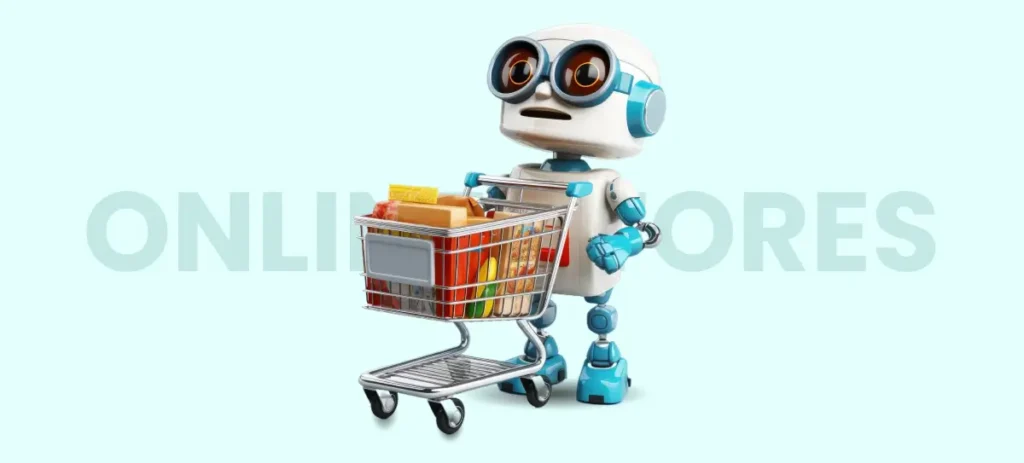
Creating a solid dropshipping return policy is essential for maintaining customer satisfaction and trust.
Here’s what to include:
- Return Timeframe: Allow 15 to 30 days for returns.
- Shipping Costs: Specify who pays for return shipping.
- Return Conditions: Items must be unused and in original packaging.
- Return Process: Require a Return Merchandise Authorization (RMA) number for returns.
This clarity builds confidence in your brand.
Dropshipping Return Policy Template Examples
Returns and Exchanges
- We accept returns and exchanges within [X] days of delivery.
- Items must be in new, unused condition with all original packaging.
- Refunds will be issued in the original form of payment.
- Shipping fees are non-refundable.
Exceptions
- Personalized items and items shipped directly from the manufacturer are not eligible for returns or exchanges.
How to Return
- Contact our customer service team at [email/phone] to request a return.
- Include your order number and reason for return.
- Ship the item to the address provided by our team.
- Once received, we will process your return within [X] business days.

Around 20% of products ordered online in the U.S. end up being returned back to the online store. ( Source )
Best Practices for Managing eCommerce Returns
When you’re managing ecommerce returns, streamlining the process is key to meeting your customers’ expectations.
A well-defined return policy can greatly impact your customer acquisition cost by improving overall customer experience.
Make sure your return policy is straightforward, with clear steps for how customers can initiate a return.
Streamlining the Return Process for Customer Satisfaction
To meet customer expectations, you should streamline your return process by incorporating chatbots and automation for efficient handling.
Offering free returns can encourage customers to shop with you more often, enhancing their loyalty.
Furthermore, addressing return fraud and managing shipping costs effectively will help create a smoother experience for everyone involved.
Using Chatbots and Automation to Handle Returns
In the current fast-paced ecommerce landscape, using chatbots and automation to handle returns can transform your customer experience.
Here are some best practices:
- Use AI chatbots for instant answers to return questions.
- Implement self-service return portals for easy management.
- Automate return label generation to save time.
- Send automated notifications to keep customers updated.
These strategies improve satisfaction and streamline your return process.
Offering Free Returns to Encourage Customers and Boost Loyalty
Streamlining the return process with chatbots and automation sets the stage for an even more impactful strategy: offering free returns.
Here’s how you can implement this effectively:
- Increase customer confidence.
- Reduce cart abandonment rates.
- Improve general customer satisfaction.
- Foster brand loyalty.
Addressing Return Fraud and Shipping Costs
Managing return fraud and shipping costs is crucial for maintaining customer satisfaction while protecting your business’s bottom line.
To effectively address these issues, consider implementing these best practices:
- Require proof of purchase for returns.
- Limit returns on high-risk items.
- Clearly state return shipping costs.
- Use self-service portals for tracking returns.
These steps can help reduce fraud and improve the return experience for customers.
Successful Return Policy Examples from Top Brands
Let’s look at some top brands that have mastered their return policies.
Zappos, Amazon, Chewy, Best Buy, and Warby Parker each offer unique approaches that improve customer satisfaction and loyalty.
1. Zappos: Seamless Returns for Customer Satisfaction

How does Zappos maintain such high levels of customer satisfaction?
They’ve created a seamless return process that includes:
- A generous 365-day return policy for unworn items.
- Free return shipping to eliminate purchase barriers.
- An intuitive online return portal for easy initiation.
- Clear communication about return policies on their website.
These elements foster trust and encourage repeat purchases among customers.
2. Amazon: Efficient Returns with Low Costs
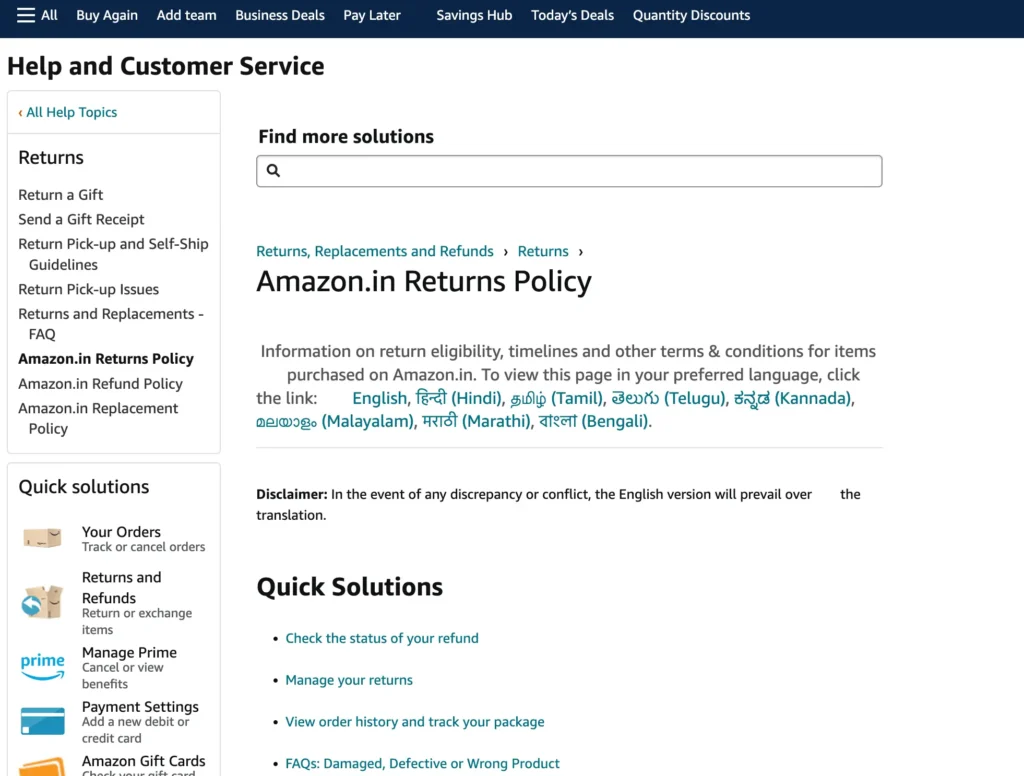
Amazon’s efficient return management system stands out as a benchmark for ecommerce, ensuring minimal shipping costs while maximizing customer satisfaction.
Here are four key features that make it successful:
- 30-day return window for most items.
- Self-service options for easy returns.
- Free return shipping on eligible products.
- Automated notifications to keep you informed.
These elements foster trust and improve your shopping experience.
3. Chewy: Personalized Returns for Loyalty

Chewy sets a high standard for ecommerce return policies by prioritizing customer loyalty through personalized returns.
Their approach includes:
- A generous 365-day return window.
- Personalized customer service during returns.
- Free return shipping, minimizing costs.
- An easy-to-navigate return process online.
These elements foster trust and encourage repeat purchases, making Chewy a model for effective return policies in ecommerce.
4. Best Buy: Transparent Policies for Trust
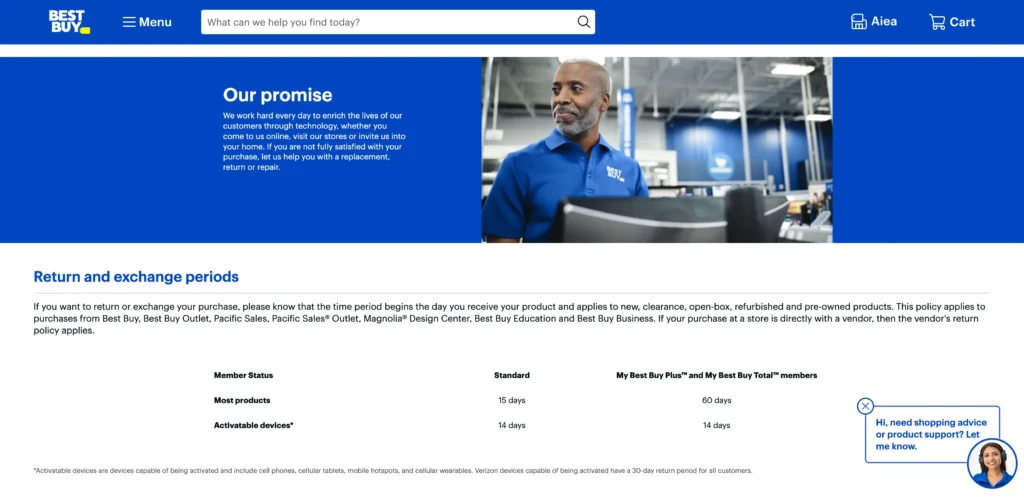
When you shop at Best Buy, you can count on a return policy that prioritizes your needs and expectations.
Here are key features of their return policy:
- 15-day return window for most products.
- 30-day extension for holiday purchases.
- Clear information on restocking fees for opened items.
- Easy online return initiation for convenience.
This transparency helps build trust and guarantees a smooth return experience.
5. Warby Parker: Easy Returns for Repeat Purchases
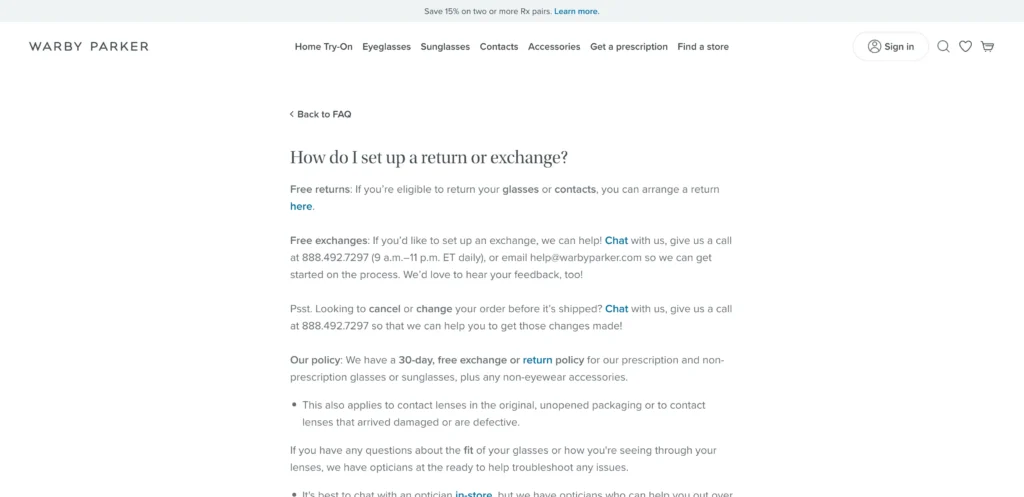
Emphasizing customer satisfaction, Warby Parker has crafted a return policy that’s not just user-friendly but also encourages repeat purchases.
Here’s what makes it effective:
- Hassle-free returns within 30 days.
- Prepaid return shipping labels for convenience.
- Try on multiple glasses at home.
- A reported 92% likelihood of customers repurchasing.
This approach builds trust and improves the shopping experience.
How to Communicate Your Return Policy Effectively
You need to make your return policy easy to find on your website. Placing it prominently on key pages like the homepage, product pages, and checkout page is crucial, as it allows customers to see it before they buy.
Furthermore, ensuring that the return policy is aligned with understanding customer behavior can improve customer satisfaction and trust. By using simple language and clear headings, you’ll help customers understand your policy without confusion.
Where to Place Your Return Policy on Your Site
To effectively communicate your return policy, you need to make certain it’s visible across different channels.
Here are four key places to display your return policy:
- Product pages, so customers see it before they buy.
- Checkout carts, to remind them during the purchase process.
- Customer emails, especially in order confirmations, for reassurance after buying.
- In-store signage, to create a consistent experience between online and physical shopping.
Ensure Visibility on Ecommerce Websites and Product Pages
A well-placed return policy can improve customer confidence and drive sales, making its visibility on your ecommerce website vital.
To effectively display your return policy, consider these key locations:
- Product pages
- Checkout page
- FAQ page
- Website footer
Prominently displaying your return policy in these areas guarantees customers can easily find the information before making a purchase.
Include Policies in Customer Emails and Checkout Carts
Including your return policy in customer emails and checkout carts is essential for enhancing transparency and building trust.
Here’s how to do it effectively:
- Display the policy prominently on product pages.
- Summarize it in checkout carts to reduce cart abandonment.
- Include links in order confirmation emails.
- Add it to your FAQ section for quick access.
These steps foster customer confidence and satisfaction.
Utilize Brick and Mortar Store Signage for a Cohesive Experience
Displaying your return policy effectively across all channels is essential for creating a seamless shopping experience.
Here’s how to utilize brick-and-mortar store signage:
- Place signage near checkout areas.
- Include return policy details on customer receipts.
- Use clear visuals and language for quick understanding.
- Regularly update signage to reflect any changes.
This guarantees customers are informed, whether shopping online or in-store.
FAQs About eCommerce Return Policies
How Long Should My Return Policy Be for an Online Store?
Deciding how long your return policy should be can feel overwhelming, but it’s crucial for building customer trust.
A return window of 30 to 90 days is standard, with 30 days being most common. Offering a longer period can boost satisfaction and encourage repeat purchases.
What Should I Include to Prevent Return Fraud?
A well-defined return policy not only improves customer confidence but also helps protect your business from return fraud.
To prevent fraud, require items to be unused and in original packaging, use a Return Merchandise Authorization (RMA) system, and set shorter return windows for high-risk items.
Ultimately, clearly communicate the consequences of return fraud, like account suspension, to deter potential fraudsters.
Can a Return Policy Help with Inventory Management?
Implementing a well-structured return policy can greatly boost your inventory management strategy. By tracking return patterns, you can identify items with high return rates and adjust your stock levels accordingly.
Encouraging exchanges over refunds helps maintain inventory while satisfying customers. Furthermore, using technology for returns can improve accuracy, streamline restocking, and ultimately reduce excess inventory, enhancing your cash flow.
Final Thoughts on Boosting Customer Loyalty with Your Return Policy
Creating a customer-centric return policy is crucial for enhancing loyalty and satisfaction.
Start by outlining clear steps for customers to follow when returning items, and make sure to communicate any significant details, like time frames and costs.
Next Steps for Implementing a Customer-Centric Return Management Strategy
While a strong return policy is essential for building customer trust, the next steps toward implementing a customer-centric return management strategy are likewise significant. Start by defining clear return windows, utilizing technology for seamless processes, and regularly updating your policy based on feedback. Communicate these policies effectively to improve customer satisfaction and loyalty.
| Step | Action | Benefit |
|---|---|---|
| Define Return Policy | Set clear terms and timeframes | Builds customer trust |
| Use Technology | Implement self-service portals | Streamlines the process |
| Gather Feedback | Regularly review policies | Guarantees relevance and loyalty |
Conclusion
Creating a return policy that improves customer loyalty and satisfaction is crucial for your ecommerce business.
By focusing on clarity, a reasonable time frame, and transparent shipping costs, you can make the return process smooth for your customers.
Furthermore, utilizing insights from CRM tools can help you understand customer preferences and elevate the comprehensive shopping experience.
Keep refining your policy based on feedback, and you’ll likely see increased trust and repeat purchases.
